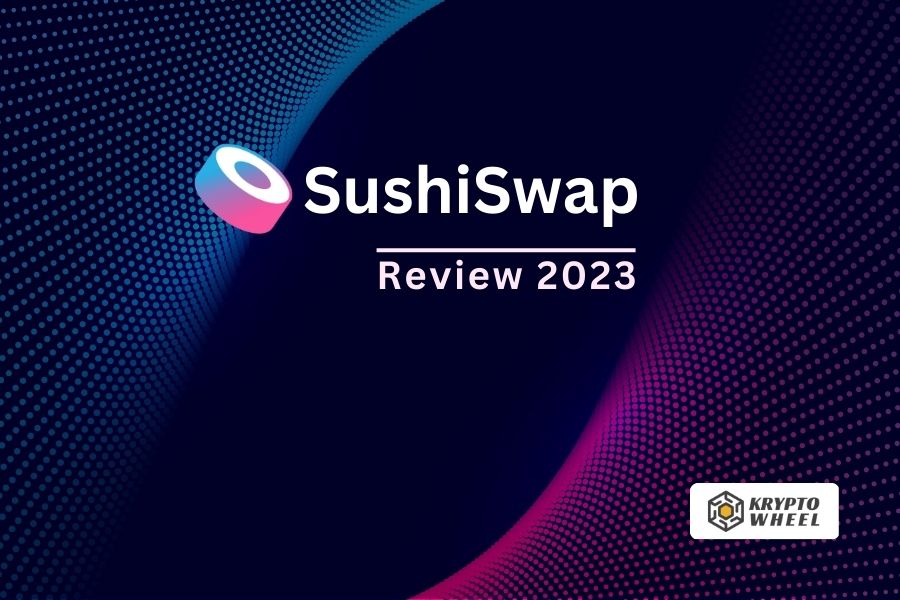
SushiSwap – Solving The Liquidity Problem With DeFi
- Antonio Anderson
- April 4, 2023
- Review
- decentralization, defi, finance, market, SushiSwap
- 0 Comments
As the world of decentralized finance (DeFi) continues to expand, new solutions are being developed to tackle some of the industry’s biggest challenges. One such challenge is the liquidity problem, which can hinder the ability of different forms of liquidity to connect with markets in a decentralized way.
While several solutions have emerged to address this issue, SushiSwap stands out as a community-driven organization that intertwines many decentralized markets and instruments, creating a broader range of network effects.
In this article, we’ll explore the purpose of SushiSwap and how it works, as well as its features and benefits for DeFi enthusiasts.
What Is SushiSwap, And How Does It Work?
SushiSwap is a decentralized exchange (DEX) that allows users to swap cryptocurrencies without needing a trusted intermediary or personal background check. Unlike centralized exchanges, DEXs like SushiSwap offer faster, cheaper, and wider-ranging asset-swapping capabilities.
What’s more, SushiSwap is currently the most widespread DEX of its kind, deployed on 24 chains and counting. This means users can easily access SushiSwap on any established chain, allowing for friction-free trading experiences.
But how exactly does SushiSwap work? Using an Automated Market Maker (AMM) model, SushiSwap automatically facilitates trades by leveraging liquidity provided voluntarily by other users.
This approach eliminates the need for a traditional order book with buyers and sellers on each side, enabling faster and more optimal execution prices for trades.
Beyond Swaps – Exploring Sushi’s Features
While swaps are SushiSwap’s primary function, the platform offers many other features for DeFi enthusiasts to explore. Here’s a closer look at some of SushiSwap’s additional capabilities:
Liquidity Provision with Sushi Pools
SushiSwap employs a decentralized AMM model that relies on liquidity provided by users to facilitate swaps. Users can provide liquidity to the protocol by depositing a given pair of assets into a liquidity pool.
These pools are then used to make low-slippage swaps when another user is looking to trade for one of the assets in the pool.
Liquidity Providers (LPs) and SLPs
Users who provide liquidity in this way are known as Liquidity Providers (LPs). SLP tokens (Sushi Liquidity Providers) are exchanged for the liquidity LPs provide, and they receive an additional yield of 0.25% when trading a given pair of tokens.
Farming for Additional Yield
Farming is a way for SushiSwap to incentivize liquidity by allowing LPs to stake their SLPs for even more yield. This yield is paid out in Sushi’s native token, $SUSHI.
Onsen Farms for Dual Asset Rewards
SushiSwap has a handful of special farms known as Onsen, which pay out in two assets instead of solely $SUSHI rewards. These farms are designed as a liquidity provision system for relatively new projects.
Token Streaming with Furo
Furo is a product in the Sushi suite that automates payrolls, salaries, side gigs, and more. Users fill out the required fields (such as wallet addresses, payment tokens, and schedules) to automatically earn an extra yield on funds deposited into the stream.
Along with swapping assets, SushiSwap provides additional capabilities that drive liquidity and increase capital efficiency within the DeFi ecosystem. As the platform continues to expand and evolve, users can expect even more exciting features and benefits to be added in the future.
Weighing the Benefits and Drawbacks
Like any platform, SushiSwap has its pros and cons. Here’s a brief rundown:
Pros:
- SushiSwap’s AMM model offers efficient, fast, and low-fee asset swapping.
- The platform’s liquidity provision and farming capabilities incentivize users to provide liquidity and increase capital efficiency.
- SushiSwap is available on multiple chains, making it accessible to a wide range of users.
- The platform’s decentralized nature provides increased security and trustlessness compared to centralized exchanges.
Cons:
- As with all decentralized platforms, users must take responsibility for their security and understand the risks associated with DeFi protocols.
- SushiSwap’s reliance on liquidity provided by users can lead to potential issues with liquidity if a particular pool is not well-staked.
- SushiSwap’s user interface can be overwhelming for new users, and the swapping process may take some time.
Who Benefits Most from SushiSwap?
SushiSwap is an excellent platform for a range of users, particularly those who want to earn rewards and interest or engage in community governance. For those who want more than just swapping assets, SushiSwap’s liquidity provision and farming capabilities offer exciting opportunities to increase capital efficiency. Also, since the platform is community-run, users have a say in its progress and decision-making.
Final Words
SushiSwap is a powerful tool in decentralized finance, offering a range of features beyond just swapping assets. Whether you’re a new user looking for a user-friendly DEX or a seasoned DeFi enthusiast looking for innovative features and opportunities, SushiSwap has something to offer. As SushiSwap continues to grow and evolve, users can expect even more innovative features to be added in the future.





